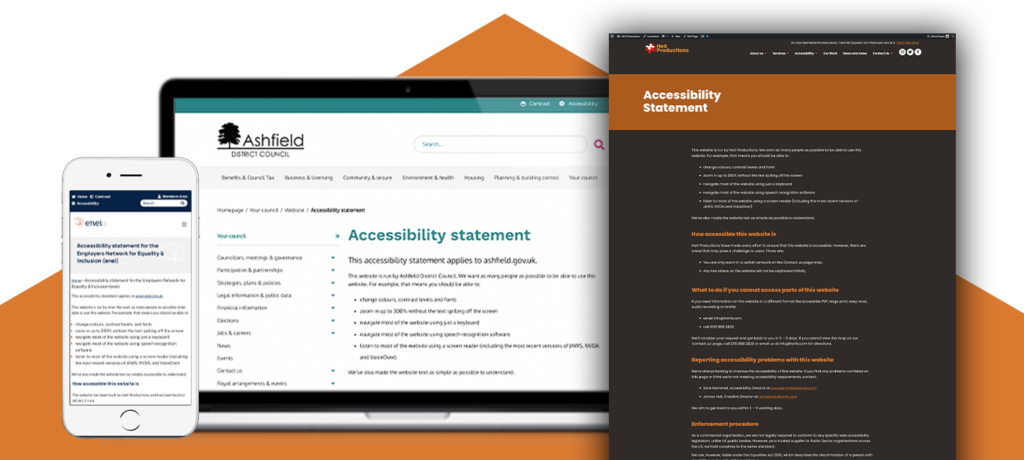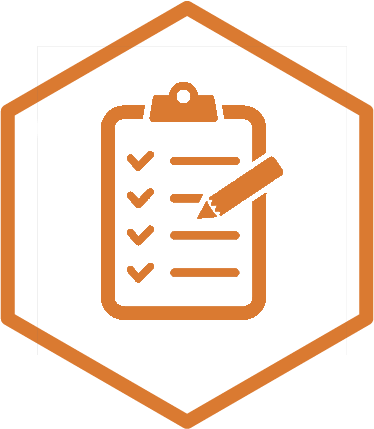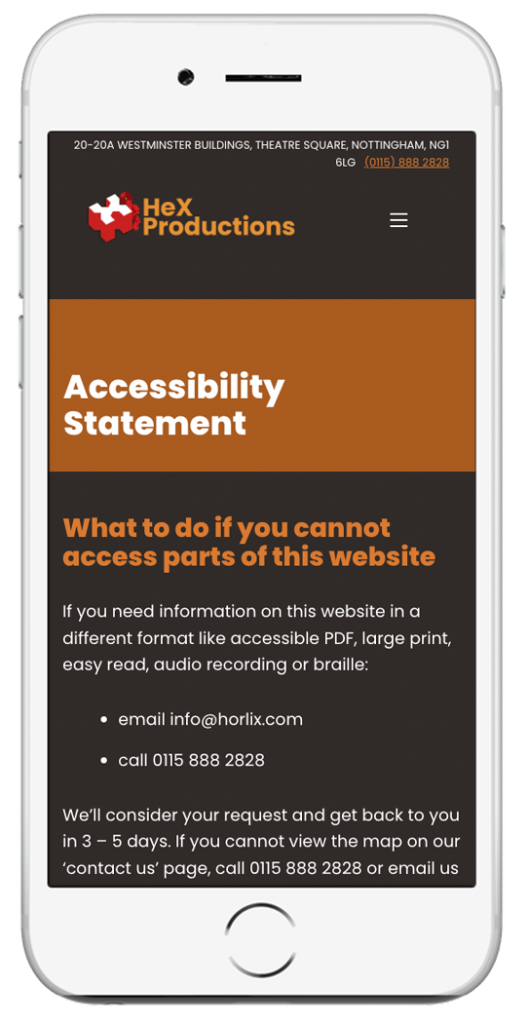More organisations are realising the importance that digital accessibility brings. Businesses want as many website visitors as possible to use their platform. So, they are understanding the need to include accessibility statements online. This blog explores what to include in an accessibility statement to define your site’s level of accessibility.
What is an accessibility statement?

A website accessibility statement is important to include as part of your accessibility initiative.
Accessibility statements are public information web pages. This area displays an organisation’s commitment to digital accessibility. More than this, it helps users with disabilities to understand what areas of a website are accessible. For example, it should state if certain site features or its documents are inaccessible with assistive technology. Therefore, it’s a website area that should updated if and when online barriers are removed. In turn, helping to assist all users to interact with your platform.
The benefits of having an accessibility statement

In this modern day, people have high expectations for organisations to take a stand on values. If they don’t do so, you may find they will walk away from those who aren’t inclusive.
When you include a website accessibility statement it:
- Demonstrates your commitment to helping to build an accessible society and removing digital obstacles. Which, in turn, will strengthen your organisation’s reputation and aid in gaining loyal customers.
- Presents disabled website users with vital information they need to engage with the information you offer. By declaring issues that people may be presented with, will help to avoid confusion or frustration when online. In return, this may prevent you from losing their custom.
- Can assist your organisation to lay out a road map of required accessibility changes. It will also let your audience know that you are working to remove these digital barriers.
- Is best practice. However, for public sector websites it is a necessity and can help you to avoid costly lawsuits.
The first step is finding out the areas of your website that are inaccessible

You can start with some free online automated tests to find basic accessibility errors. However, the only way to get a true picture of the inclusivity of your site is through accessibility audit testing.
At HeX we advise a three-pronged approach to a website accessibility audit:
- Automated audit software scanning of websites.
- Manual user audit testing with assistive technology and devices. A pan-disabled team at Shaw Trust Accessibility Services, who we work in partnership with, undertake manual user testing for HeX audits. This helps to assess the user experience online for varying disabilities.
- A technical review of the website from our team of expert developers. This assesses the codebase, seeking out errors and finding areas where ARIA (Accessible Rich Internet Applications) could enhance the user experience further.
What an accessibility statement should contain
Display your accessibility statement in an easily accessible, prominent area of your website. Typically, these are normally linked to within the main header or footer of a platform.

An accessibility statement should include the following key areas:
- A statement of commitment to accessibility. This should be a simplistic description of your efforts to make your platform accessible. Include how the site has been assessed and your intentions to remove further barriers.
- An outline of accessibility standards that the website has been tested against. For example, Web Content Accessibility Guidelines (WCAG) Level AA 2.1 standards.
- A declaration stating if the website is fully, partially, or not accessible.
- Up to date contact information. Site visitors may need to report inaccessible areas that have not been declared to you. They may also require an alternative format to be able to equally access information. An important consideration is to include different forms of contact methods to enable all users to get in touch.
- List known areas and limitations that some users may face within your site. This could be items such as inaccessible areas on a keyboard, videos without captions, poor colour contrasts, inaccessible form elements or digital documentation that isn’t inclusive.
- A reference to enforcement procedures and legislation.
- Let your website audience know what you are doing to improve your website’s accessibility.
- State who has prepared your accessibility statement. Include the date your platform last had an accessibility test.
Review your platform’s accessibility annually. Your accessibility statement should be updated to reflect when this occurs and any changes that been implemented.

Need help in creating an accessibility statement?
Accessibility statements are never a one-size-fits-all solution, and they can be a difficult and time-consuming process to create. We can help you by writing an accessibility statement for your organisation, working with the findings of your accessibility reports or audits. This can be from a third-party audit or from a HeX audit. Creating an accurate and compliant accessibility statement, which can assist all users online.
